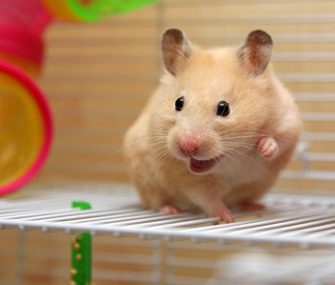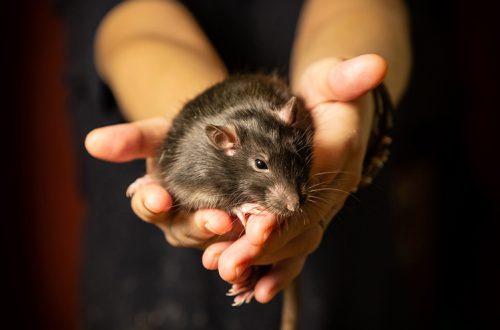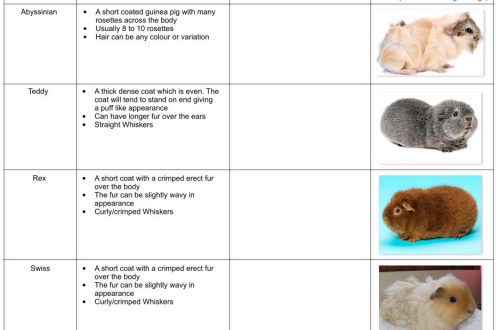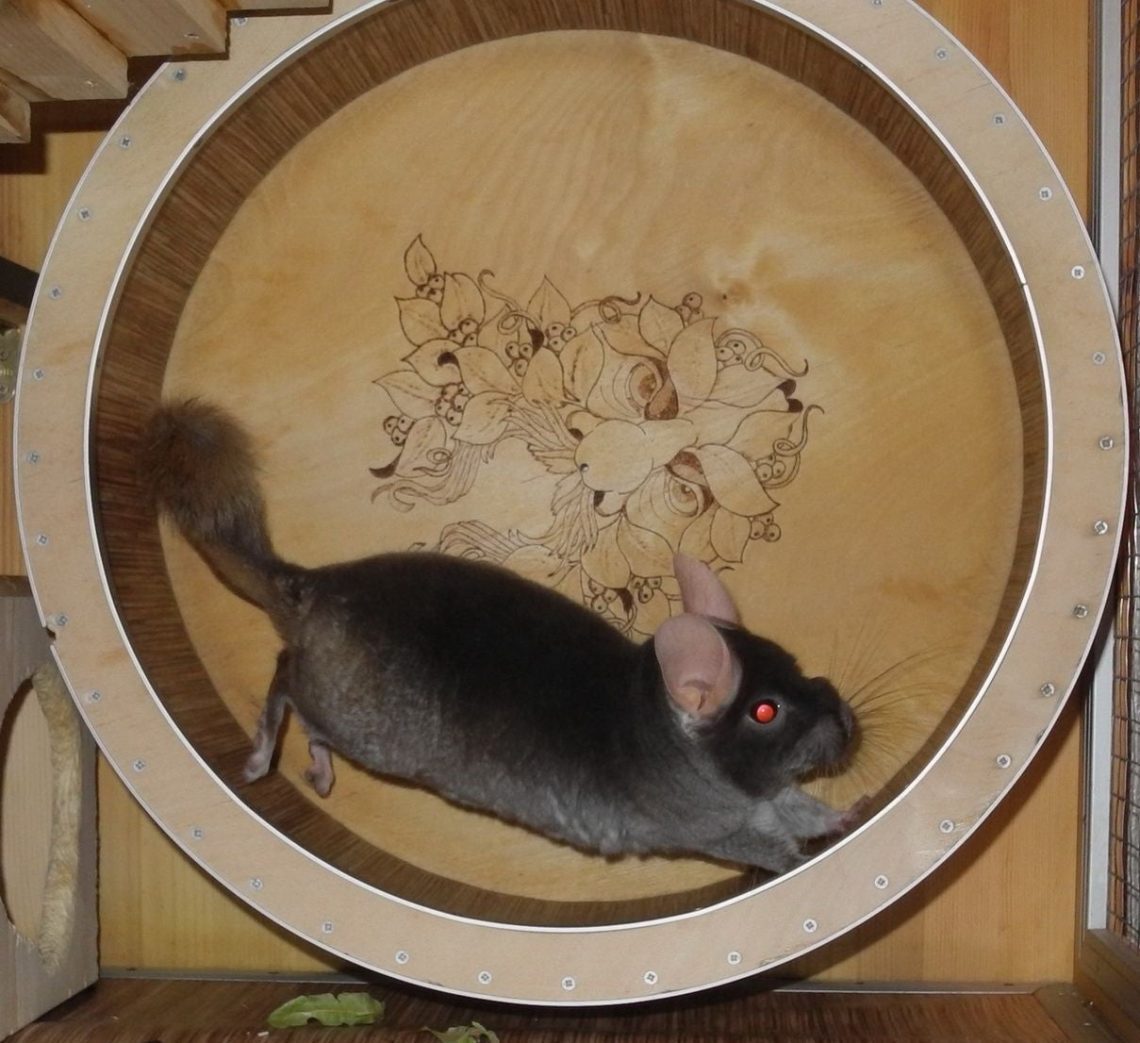
Running wheel for chinchilla: types, materials, DIY
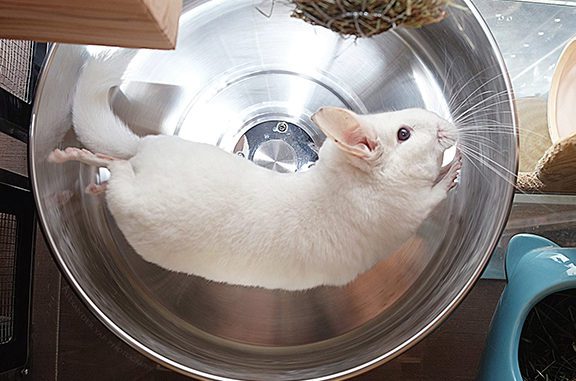
A running wheel for a chinchilla is an important attribute of her daily life, which is also responsible for the pet’s health. In a cage, the animal should not be bored, because the level of mobility in a cramped space is very limited. By nature, these pets are quite mobile, and the right hobby will help you get rid of such bad habits as biting your own fur. You can purchase a chinchilla running wheel or make your own by following simple instructions.
Contents
- Is there a need for a running wheel
- What material is preferable
- What should be the size of the wheel
- How to make a do-it-yourself running wheel for a chinchilla
- Video: how to make a do-it-yourself wheel with a wall mount
- Video: how to make a wheel for a chinchilla with your own hands, which is installed on the floor of the cage
- How to teach a chinchilla to run on a wheel
Is there a need for a running wheel
There is a need for such an attribute, since in addition to having fun, while the chinchilla runs in the wheel, muscle atrophy does not threaten her. The wheel is purchased together with the cage and no one thinks about its functional features.
What material is preferable
It is possible to use several materials that are perfect for exercising an active chinchilla.
Plastic
Such material does not absorb moisture, it is completely safe, but it is difficult to find the optimal size product. The size of the wheel for a chinchilla is selected based on the dimensions of the animal itself.
The maximum dimensions of the product are about 32 cm, which is only suitable for a small rodent. Such dimensions are due to the fact that the design is most often used for hamsters.
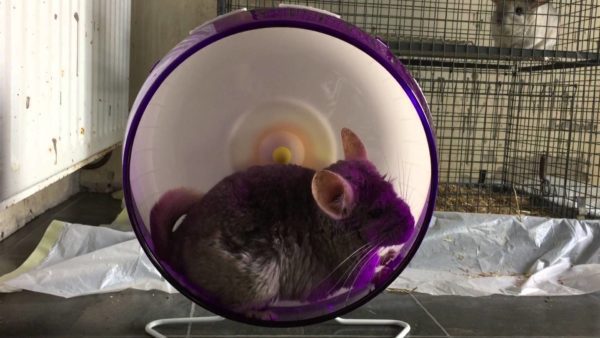
Metal
First of all, you should pay attention to the fact that such structures are recognized as traumatic. Their bottom is made mesh, so the claw or finger of the animal can get into the cell. Most injuries can be avoided by wrapping the wheel with a thick cloth that will hide the existing cells. An installed metal wheel stand can also harm a pet by simply crushing it.
If there are several rodents, the level of danger only increases, because while one will run, the second may try to stick his head under the structure.
An alternative would be an aluminum structure, which is fixed to the wall, and therefore there is no need to install an additional stand. However, in this case, it will be problematic to choose a wheel diameter for a chinchilla, since the domestic manufacturer does not manufacture them.
Tree
This option can be called almost ideal, since such a wooden wheel can be ordered at the nearest workshop. This design will not have sharp edges, as well as mesh cells, which often cause injuries to animals. The disadvantages include the ability to absorb moisture and various odors by the material. It is almost impossible to wash a contaminated surface, and it will not work at all to get rid of the smell of excrement. Chinchillas like to defecate in new places, so you will either have to put up with the smell, or often change the design.
However, the disadvantage can be avoided by covering the surface with an auxiliary layer of paint or varnish. But here, too, one must take into account the moment that the chinchilla will gnaw the wheel. Getting pieces of paint or varnish into the esophagus is unlikely to benefit the health of the pet.
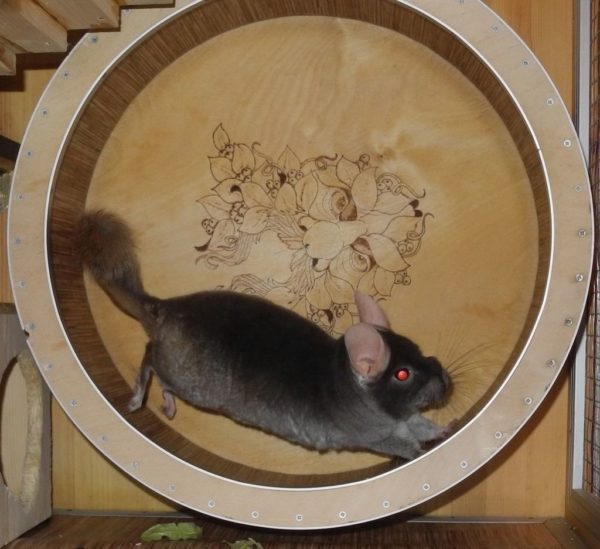
What should be the size of the wheel
The size of the wheel depends on the size of your pet. The diameter of the wheel should be at least 32-34 cm. The width of the treadmill should be at least 15-17 cm. Accordingly, the larger the chinchilla, the larger it should be. The wheel should not be small, this leads to the fact that the chinchilla in such a wheel will stumble or bend, which in turn can lead to spinal injuries, dislocations of limbs or fractures.
How to make a do-it-yourself running wheel for a chinchilla
Such a device can be designed independently. For this, it is customary to use wood, as the most affordable and environmentally friendly material. Even if the pet is inclined to grind his teeth on his favorite toys, if he has a wooden wheel, he will not harm himself.
The chinchilla in the wheel will feel calm and, if necessary, gnaw on the rim of the circle, which can later be replaced. This option is the most economical, but if desired, you can make a metal rim that will extend the life of the product.
From the materials you will need:
- drill;
- electric jigsaw for woodworking;
- compass and ruler;
- a set of screws;
- bolts;
- a set of self-tapping screws;
- small boards (width 3 cm, length approximately 15 cm).
Sequencing:
- First of all, we cut out an even circle. To do this, take a sheet of plywood, use a jigsaw to cut a small hole, use a compass to draw the required radius. Then, thanks to the hole made, we fasten the jigsaw to the table with a bolt.
- Plywood is sawn by turning it around an axis along a drawn circle. This is the only way to get the right circle of the desired diameter.
- After that, a ring with the same outer diameter is cut out. We take thin screws and fasten the planks to the inside of the wooden ring. To prevent the wood from cracking, the holes should be carefully drilled with a drill with a 1,5 mm drill bit. In order for the ring to have good strength, it is attached to the plywood circle from the outside.
- After we make a knot of rotation and fastening. To secure the fastening, you need a bolt with a length of at least 150 mm. In order for the bolt not to put much pressure on the plywood and not damage it, a steel washer with a diameter greater than the diameter of the bolt is put on it. The bolt must be inserted inside the structure, and secured on the outside with the same washer.
- The tensioner put on the bolt is fastened with screws to the wooden plank. What is a good tensioner? Its plastic clip does not make noise during rotation. That’s all – the design is fully assembled.
Video: how to make a do-it-yourself wheel with a wall mount
The cage toy can be installed in several ways:
- The design is installed on the bottom of the cage and can be attached to a plank or plank using two self-tapping screws, but the width of the plank must be at least 100mm, otherwise the chinchilla can easily turn the toy over.
- A bar with a tensioner can be screwed to the cage wall with a wire. This option is more acceptable, since the rodent is no longer able to move or turn over the simulator.
Video: how to make a wheel for a chinchilla with your own hands, which is installed on the floor of the cage
How to teach a chinchilla to run on a wheel
If the dimensions of the wheel for running are chosen correctly and high-quality material was used, then the pet should show at least some interest in the new unit. The wheel must be fixed and installed correctly. However, if due interest was not shown, then you should not get upset ahead of time. To begin with, the rodent must be introduced to the new piece of furniture. The wheel can be twisted, thereby making it clear what can be done with it.
Having understood the meaning, the chinchilla will certainly want to ride on a new device. If the structure is wooden, then the animal will inevitably begin to gnaw it. Nothing can be done about this, because in this way he will get used to the changed environment in the cage.
You can teach a chinchilla to a wheel by training, but in this case the animal will think that you are playing with it. To begin with, you will need a favorite delicacy of the chinchilla and some free time on the part of the owner.
If interest alone is not enough, you should put the animal in the wheel and slowly turn it back and forth. The entrance can be temporarily covered with a hand so that the pet does not try to escape. If everything is in order, then during the day the rodent will begin to independently study the installation, sometimes even tasting it. If there is no activity for the next few days, it is recommended to use a treat that is placed inside the running wheel. After the first round, the pet should be rewarded, and so on for some time. If none of the methods used work, you should leave your plan, because the rodent can simply be lazy by nature.
How to choose or make your own chinchilla running wheel
4.3 (85%) 8 votes



